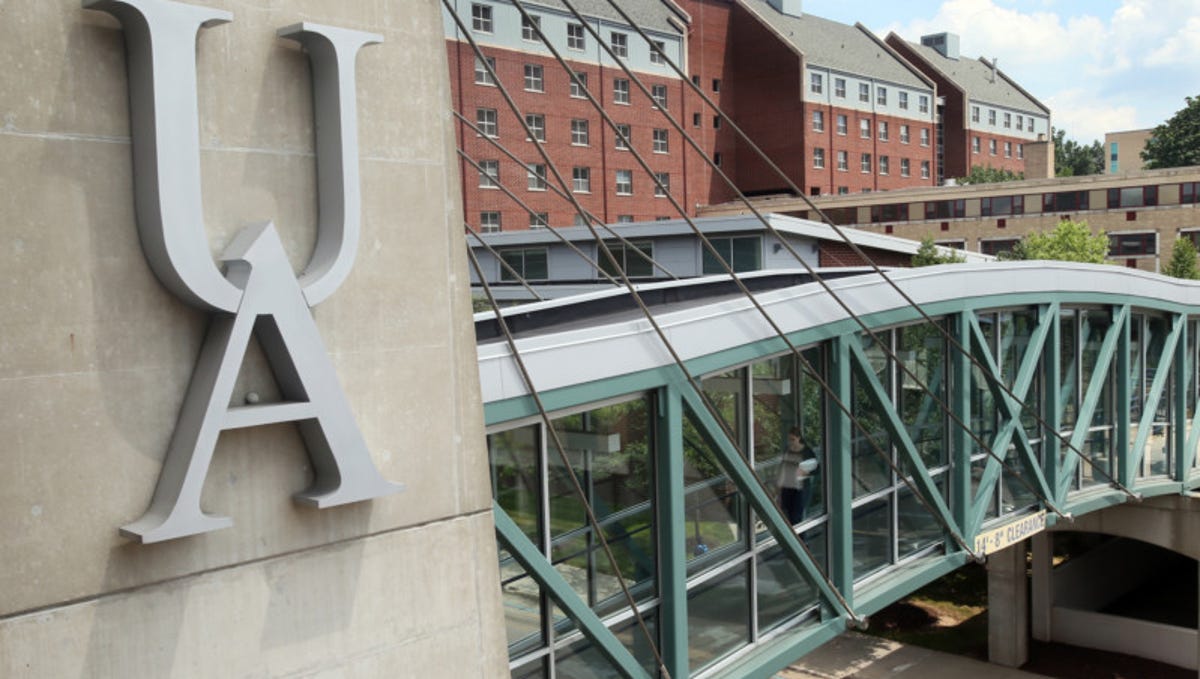
How will Trump’s new spending bill affect student loans?
President Donald Trump’s newly passed spending bill is set to overhaul the federal student loan system.
unbranded – Newsworthy
Local colleges are waiting to see what the impending elimination of a federal student loan program that helps cover the cost of attending graduate and professional schools will mean for them.
Under the “Big Beautiful Bill” signed into law July 4 by President Donald Trump, the Grad PLUS loan program will be abolished, effective July 1, 2026.
The Grad PLUS loan is usually used as a second course of action for graduate and medical or other professional school students who need additional funding after they have taken out direct loans through the U.S. Department of Education’s Federal Student Aid office.
Direct loans have lower interest rates, but there are annual and total limits, according to National Association of Student Financial Aid Administrators policy analyst Sarah Austin.
Current borrowers are eligible to continue to borrow from the Grad PLUS program for an additional three years or until their current graduate or professional program is completed, Austin said.
At the University of Akron, the federal direct unsubsidized loan will usually cover the cost of tuition for graduate programs, according to Jennifer Harpham, director, student financial aid. But some UA students use the Grad PLUS loan for other necessary expenses, such as books, supplies, equipment, room and board or transportation.
UA is determining the percentage of students using the Grad PLUS loan and could not immediately provide a number.
“UA is assessing the impact that these changes are going to have on our graduate and professional students and is still waiting for guidance from the Department of Education since this is so new,” Harpham said.
Lack of credit could make it hard for graduate students to get private loans, experts say
The Grad PLUS loan requires an additional application where a credit check is run. However, this credit check only looks for an “absence of adverse credit.”
“Private student loans may have stricter credit qualifications and lower approval rates,” Harpham said. “So students who are not approved for private loans, may alter their plans to further their education if they don’t have access to other resources.”
Many college students don’t have any sort of credit built, let alone strong credit. Private loans can be harder for college students to attain since they require a strong credit worthiness.
The federal loans offer “all sorts of borrower protections that private loan programs may not have,” Austin said. “Things like income driven repayment plan, forbearance and deferment options, loan forgiveness options.”
Additionally, federal loans rather than private loans may come with access to the Public Service Loan Forgiveness program for high-cost programs like law school or medical school, Austin said. Pushing more loans into the private sector may decrease students’ willingness to attend these programs without the anticipated loan forgiveness.
“If a student is not able to fully fund their education with just the direct loan program, especially with those loan limits and they are not able to take out private loans, we do have concerns about those students being able to attend at all,” Austin said.
Harpham anticipates the elimination of the program will affect middle-income and low-income students most, especially in situations where a student doesn’t have access to other resources.
Medical schools, physician groups raise concerns about student loan changes
The American Academy of Medical Colleges and the American Association of Colleges of Osteopathic Medicine joined with 46 physician groups to write letters to the U.S. House and Senate raising concerns about the elimination of the Grad PLUS program. The groups also opposed new limits on direct loan borrowing and limited eligibility to the Public Service Loan Forgiveness program for physician residents.
The groups said these changes could worsen physician shortages nationwide.
“Eliminating Grad PLUS or restricting aggregate lending will disadvantage the more than 40% of all medical students who use the programs because they may no longer be able to afford medical school if required to borrow from the private loan market,” the groups stated in their letters.
Tonya Strong-Charles, spokeswoman for tthe Northeast Ohio Medical University in Rootstown, said NEOMED is “currently evaluating the new policy.”







